History originally published in AutoWeek July 19, 1999; republished by the author
It looks so innocent, like any other Saab 93 there in the Saab Bilmuseum. But with its hood lifted off and set aside, something appears amiss. Saab aficionados recognize that the engine is not longitudinal but transverse. And more: Six spark plugs are lined up across the engine bay like soldiers ready for inspection. A closer look reveals two cylinder heads, each mounted on its own engine block. This Saab has two engines!
That’s why they call it The Monster, a Frankensteinian appellation for a one-of-a-kind of project that surely began over mugs of glog during a long, dark Swedish night.
Whether it actually has two engines may be a matter of semantics. What it has are two engine blocks joined at the pinion. The official rationale is that the car was an engineering experiment, on how much power could be put through the front wheels.
“At the time there was limited knowledge about front-wheel drive, and this was a way to learn something about that,” explains Peter Backstrom, curator of the Bilmuseum, while conceding that “There was certainly a ‘fun factor,’ but they didn’t want to acknowledge that officially.”
The engines were GT750 units, in stock form rated at 45 hp DIN. A tuning kit with twin-choke carbs raised that to 57 hp DIN. These two engines, however, were race-tuned with higher compression and revised port timing to produce about 70 hp at 6000 rpm. Each.
They were mounted in a 93 chassis with almost every racer trick for lightness, including aluminum fenders and bumpers, fiberglass hood and trunk lid, and a stripped and Swiss-cheesed interior. Net weight was 1475 pounds.
Either a 93 or 95 transmission was used (meaning three- or four-speed, respectively). Each engine had a flywheel with attached crownwheel driving a single pinion off the transmission, over driving the gearbox by 11 percent for more speed.
A radiator from the thermosiphon-cooled Saab 92 was used because it was bigger than the 93’s but mounted in the conventional (for Saab) position behind and above the engine. Between the engines, the transmission’s input shaft turned a pulley for twin water pumps and the overhead fan shaft for the radiator. The generator was mounted on the left engine. On the dash was a tachometer and two engine temperature gauges. The chassis set up was normal, other than a slightly stiffer front end, and standard brakes were used, though water-cooled like the ‘59 LeMans Saab 93 racer.
Expansion chambers and to two-inch pipes exiting ahead of the right-rear wheel comprise the exhaust system. The sound, says Backstrom, who drove the car at Saab’s 50th anniversary, is “absolutely staggering. At 6000 rpm it sounds like 12,000 rpm. It caused permanent damage to my ears but it was worth it.”
Rally driver Carl-Magnus Skogh tested The Monster at Satenas airfield where it was time at 196 km/h (about 120 mph), a record for a sub-1500-cc car. But without official observers and only a one-way run, the test didn’t go into the books. The Monster was also tested at the Gellerasen circuit at Karlskoga where, says the factory line, “it was found to be quite a handful when cornering. The power was found to be too much for the pinion in the transmission, and the tests had to be called off, never to be resumed.”
Backstrom says that Skogh, in a later unofficial attempt, ran 223 km/h (about 138 mph), but the airfoil-shaped body with only 400 pounds on the rear wheels was unstable. Eric Carlsson, who weighed about twice as much as Skogh, was called in at this point. Carlson also recalls the unearthly engine noise, but says that The Monster was almost impossible to turn. Torque would crack the differential. And with all the weight on the front end, Carlson warns, “you also had to be very careful with the brakes.” Brake hard, he says, “and it stood straight up!”
So it was just an engineering experiment? Nej, says Carlson: “we were able to dominate the 750-cc class. In 1000-cc we could beat the Audis. We had some success against the Alfas in the 1300-cc class there was only one more class: the 1500-cc, and the Porsches.” The Swedes were going to go after the Germans. The Monster, with all the subtlety of a Viking raid, would have been the hammer. “If [the circuits] have been straight, we would have beat them.”
Addendum: Erik Carlsson was Saab’s rally ace, famous for his exploits on any kind of pavement, though mostly off. He was nicknamed “Carlsson på taket” (“Carlsson on the roof”), after a character in a children’s book. Named Carlsson, the character lived on teh roof of a house and once drove a rally car there. Life imitated art, as Carlsson famously rolled is Saab 93 rally car onto its roof. He rolled it back on its wheels, and then drove the relartively undamaged Saab off to complete the rally.
Carlsson claimed that his selection to drive The Monster was due in large part to his stout physique. He was the ballast the kept the Saab from rolling over frontwards.



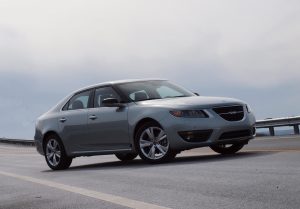
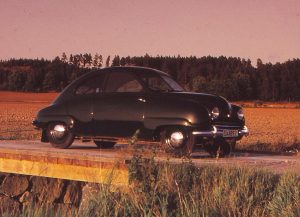
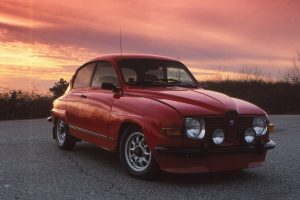

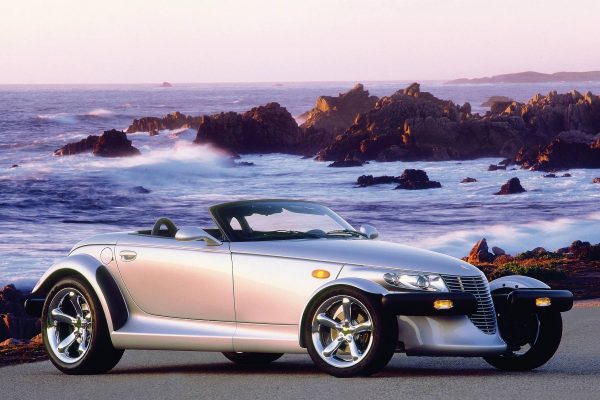
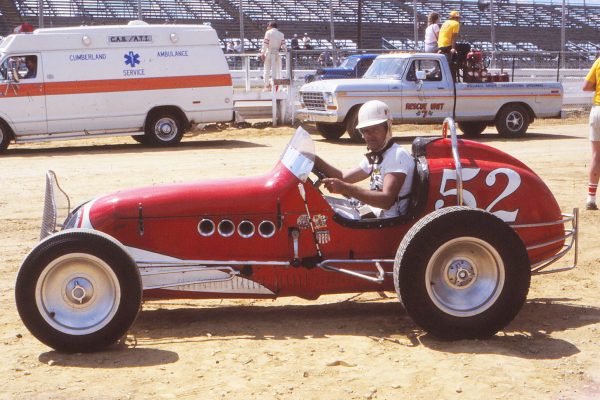
What Do You Think?
You must be logged in to post a comment.